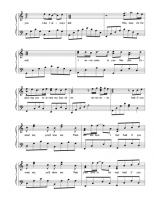

There, he taught the Figlie di Coro (“Daughters of Music”) the violin and the viola all’inglese. Vivaldi was a maestro (master) of violin and later maestro of concerts at the Ospedale della Pietà. Who was Vivaldi the educator? What and how did he teach? It is a power, not an obligation the only obligation a priest has is to say the Divine Office daily, which he did, as Goldoni attests. What people do not understand is that a priest is not obliged to say Mass daily. Later, as we know, he had to give up saying Mass due to his illness. This also is a sign that he was a very serious and spiritual man who took his faith very seriously at this early age of his life. We then depart a little further from convention by bringing in – usually quite subtly – elements from other genres, especially world music and the occasional rock riff.Another thing worth noting is that when Vivaldi was studying for the priesthood, of all the candidates who took holy orders with him, in all of the seven passages to the priesthood, four minor orders and three major orders, he was the only one to finish in the 10-year period. Vivaldi performed at ‘impossible and frightening’ speeds. “For instance, the violinist Corelli performed with such passion that he looked possessed, his eyes turned red.

“We take quite literally descriptions of performers of the day which more conservative musicians might find uncomfortable,” he continued. “We want to make every nuance, every gesture, every emotion in the music larger than life. “For us, it’s all about employing everything we have to maximum effect, and then some,” Adams explained. The musicians – a harpsichordist, cellist and violinist, as well as Adams’ recorder – merge a range of techniques, ornamentation, improvisation, articulation, bow strokes and vibrato to evoke a maximum amount of color. Red Priest’s idiosyncratic approach is rooted in historic performance practice. “He ran a thriving early-music group in the school and really got me hooked,” Adams said.


 0 kommentar(er)
0 kommentar(er)
